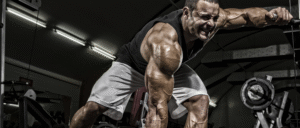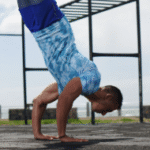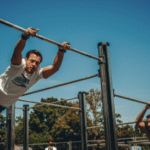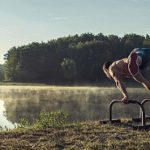Prioritizing Safety in Your One-on-One Calisthenics Sessions: A Detailed Guide
In the world of calisthenics, the allure of mastering impressive skills is powerful. However, the path to achieving a muscle-up or a handstand is paved with technical details where the line between progress and injury can be incredibly fine. This is why, in a one-on-one coaching setting, safety is the non-negotiable priority that governs every single session.
A private coach is more than an instructor; they are your personal risk manager, your form technician, and your strategic guide to building a resilient, “bulletproof” body. For anyone in Houston looking to pursue calisthenics seriously, understanding how a coach prioritizes your well-being is the first step toward a long, successful, and injury-free journey. This guide details that process.
Pillar 1: The Comprehensive Initial Assessment
Your safety journey begins before you even perform your first push-up. A qualified coach will start with a thorough assessment to build a complete picture of your unique body and history.
Movement Screening: The coach will take you through a series of basic movements to assess your current mobility, stability, and identify any significant muscle imbalances or movement compensations.
Injury and Health History: This is a crucial conversation. You will discuss any past injuries, chronic pain (like lower back pain from a desk job in the Energy Corridor), or medical conditions. This information allows the coach to know which movements to avoid or modify.
Goal Alignment: Understanding your goals helps the coach create a realistic and safe timeline. They will manage your expectations, ensuring you don’t try to rush into skills your body isn’t prepared for.
Pillar 2: The “External Eye” – Meticulous, Real-Time Form Correction
This is the single greatest safety advantage of private coaching. You cannot see your own mistakes, but your coach can.
Preventing Bad Habits: A coach will correct subtle but dangerous form errors from the very first repetition. They will spot the slight flare in your elbows during a push-up that could lead to shoulder impingement or the minor rounding in your lower back during a squat that could cause strain.
Ensuring Proper Muscle Activation: By using precise verbal and tactile cues, a coach ensures you are using the correct muscles to perform a movement. This not only makes the exercise more effective but also protects your joints and smaller, more vulnerable muscles from taking on a load they can’t handle.
Pillar 3: The Science of Progression – Building, Not Breaking
A coach is an expert in progressive overload, applying it in a way that is both challenging and safe.
Mastering the Fundamentals First: A responsible coach will insist that you master the foundational movements (perfect-form push-ups, rows, squats, planks) before even considering more advanced skills. This builds the necessary strength in your muscles and, just as importantly, resilience in your tendons and ligaments.
Logical, Step-by-Step Progressions: To learn a complex skill like a pull-up, you won’t just be told to “pull harder.” A coach will guide you through a logical sequence of exercises, such as Australian rows, negative pull-ups, and band-assisted pull-ups, ensuring you build the required strength at each stage before moving to the next.
Auto-Regulation: This is a key benefit of one-on-one training. A coach can “read the room” and adjust the day’s workout based on how you’re feeling. If you come in tired from a stressful week or dehydrated from the Houston heat, they will modify the session to be less intense, focusing on technique or mobility instead of pushing you toward injury.
Pillar 4: Proactive Injury Prevention (“Pre-hab”)
A great coach doesn’t just react to problems; they anticipate them. Calisthenics places specific demands on certain joints.
“Bulletproofing” the Joints: Your coach will incorporate specific “pre-hab” exercises into your warm-ups and workouts to strengthen the areas most at risk in calisthenics. This includes:
Wrists: Wrist push-ups and mobility drills to prepare for handstands and planches.
Elbows: Exercises to strengthen the tendons and prevent common issues like golfer’s or tennis elbow.
Shoulders: Drills like face pulls and scapular pull-ups to build shoulder stability and health.
Teaching You How to Bail: For skills like the handstand, a coach will spend time teaching you how to fall safely. Knowing how to exit a movement correctly is a critical safety skill that builds confidence and prevents accidents.
Pillar 5: The Client-Coach Partnership
Safety is a two-way street. A coach will create a safe environment, but your role is crucial.
Open Communication: You must be honest with your coach about what you’re feeling. A “good pain” (muscle fatigue) is different from a “bad pain” (sharp, joint-related). Communicating this immediately allows the coach to make necessary adjustments.
Trusting the Process: Leave your ego at the door. Your coach knows the path to your goals. Trust their expertise when they tell you you’re not ready for a certain progression. Pushing too soon is the fastest way to get injured.
Conclusion:
In calisthenics, strength and skill are built on a foundation of safe, perfect movement. While online videos can show you an exercise, they can never provide the personalized assessment, real-time correction, and intelligent programming that a private coach offers. Investing in one-on-one coaching in Houston is the most direct investment you can make in your own safety, ensuring your fitness journey is not only successful but also sustainable for a lifetime.

Prioritizing Safety in Your One-on-One Calisthenics Sessions: A Detailed Guide
Route
Calisthenics Gym Houston Functional Bodyweight Training
Secondary phone: (346) 483-3195
Email: info@calisthenicsclubhouston.com
URL: https://calisthenicsclubhouston.com/
Monday 6:00 AM - 7:00 PM Tuesday 6:00 AM - 7:00 PM Open now Wednesday 6:00 AM - 7:00 PM Thursday 6:00 AM - 7:00 PM Friday 12:00 PM - 6:30 PM Saturday 9:45 AM - 12:00 PM Sunday 3:00 PM - 5:00 PM





